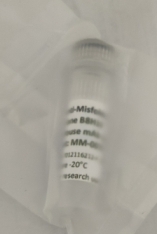 首页>
生物试剂
首页>
生物试剂
商家描述
产品评价(0)
Target
Glutamate GluR3b
Target background
Glutamate is the main excitatory neurotransmitter in the mammalian central nervous system (CNS). Its receptors are either metabotropic or ionotropic. The alpha-amino-3-hydroxy-5-methyl-4-isoxazolepropionic acid receptor, also known as the AMPA receptor, is an ionotropic receptor made up of homomeric or heteromeric arrangments of Glutamate Receptor (GluR) subunits 1 to 4. GluR3 is one of the most common AMPA receptor in the CNS. The receptors are localized mainly post-synaptically and play important roles in the development and function of the nervous system. Autoimmunity to glutamate receptors may contribute to the pathology of some epilepsy syndromes.
Target alias
GluR-3b, Glutamate receptor 3, AMPA-selective glutamate receptor 3, GluR-C, GluR-K3, Glutamate receptor ionotropic, AMPA 3, GluA3
Immunogen
aa3 72-395
Specificity
The antibody recognizes the extracellular domain of Glu3RB (aa 372 to 395)
Clone ID
Glu149.29.61
Isotype
IgG2a
Preservative
None
Format
Purified with protein G, stored in PBS pH 7.4 and lyophilized.
Recommend starting dilution
If reconstituted with deionized water in 100 µL: ELISA and FC: 5 µg / ml per sample. Optimal dilution has to be determined by the user.
Limitations
Research Use Only
Storage
Lyophilized antibodies can be kept at 4ºC for up to 3 months and should be kept at -20ºC for long-term storage (2 years). To avoid freeze-thaw cycles, reconstituted antibodies should be aliquoted before freezing for long-term (1 year) storage (-80ºC) or kept at 4ºC for short-term usage (2 months). For maximum recovery of product, centrifuge the original vial prior to removing the cap. Further dilutions can be made with the assay buffer. After the maximum long-term storage period (2 years lyophilized or 1 year reconstituted) antibodies should be tested in your assay with a standard sample to verify if you have noticed any decrease in their efficacy. To limit antibody loss or degradation, BSA (final concentration 1%) and sodium azide (final concentration 0.02%) can be added to the suggested first dilution. It is important to first verify if those preservatives are compatible with your assay.
 会员登录
会员登录.getTime()%>)
 购物车()
购物车()

 成功收藏产品
成功收藏产品